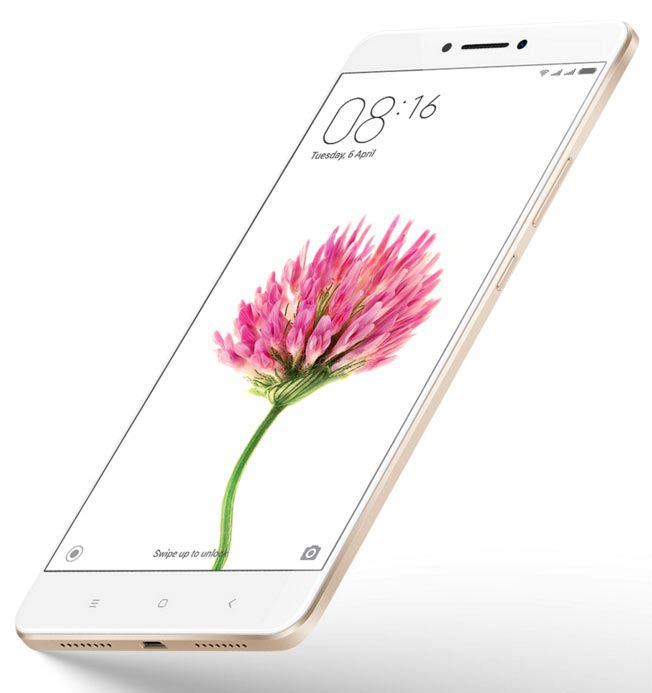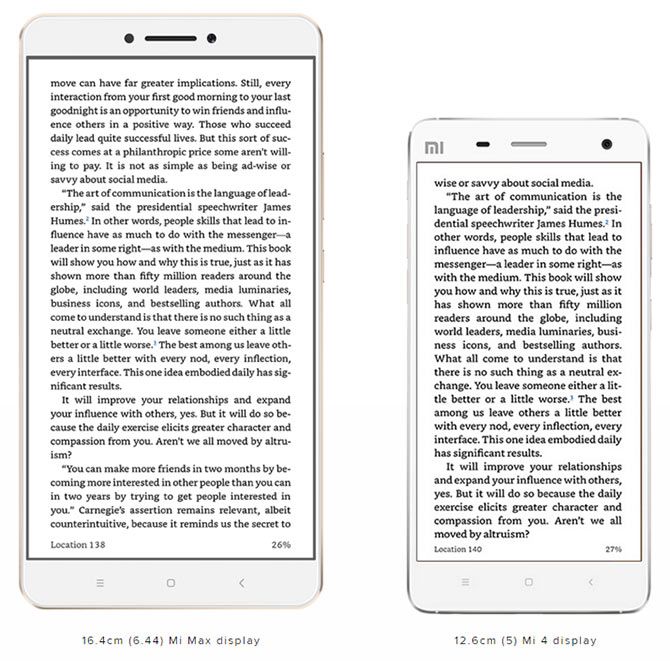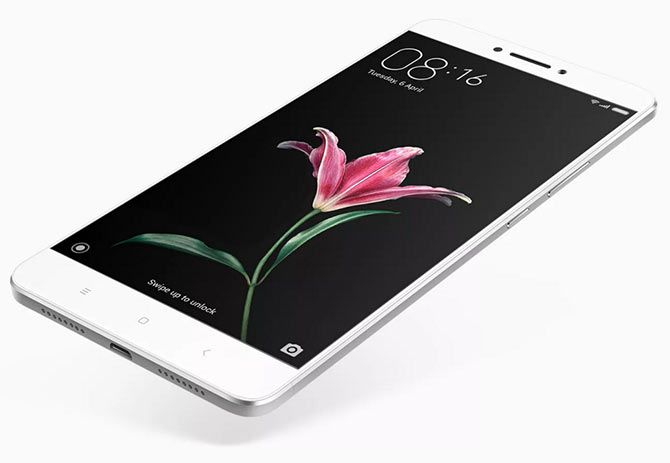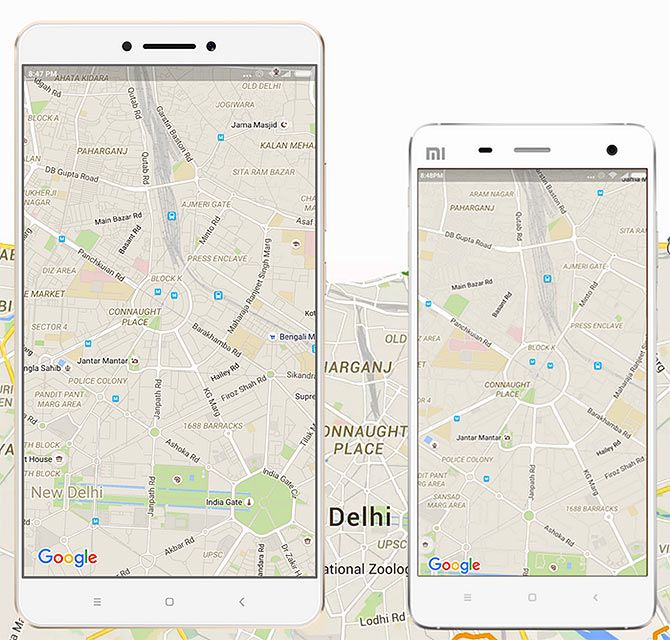Himanshu Juneja takes a closer look to find out what the phablet from Xiaomi is all about.

Looks like Xiaomi is concentrating on the Indian market with a special fervour, and the recent spate of India specific releases from Xiaomi gives fillip to the theory. The Redmi Note 3 and Xiaomi Mi 5 concentrated at two different end of the spectrum, and seems like Xiaomi has plans to corner a niche market too.
With the release of Mi Max, Xiaomi is trying to dabble even in the niche market of phablets. By the looks of it, the mammoth phone has been provided with enough firepower to draw the attention of the prospective buyers, but the category has always been a tricky one, with the onus lying on the manufacturer as well to justify the massive offering.
Build
The phone is not an all metal construction. The huge device weighs a good 203 gms, and 173.1 x 88.3 x 7.5 mm worth of dimensions makes the weight a given thing. One can forget about one handed operation on this device.
This is a well crafted device here. There were no creaking corners, or spots on the phone. The body coloured plastic panels at the back feel right at home. They serve as antennas alright, but the top panel also houses the camera and the LED flash. The camera rim is not flush with the body.
The bezel has been kept thin, and the display sits in the well with a bevel near the edges, giving the users something to establish a grip. The rounded corners and textured back make things easier to hold onto. It was strange to see Xiaomi opting for capacitive buttons and not on screen buttons given the massive display.
The fingerprint scanner is present as well on the back panel itself, and is a bit recessed. A little dexterity would allow the users to access it without too much fumbling. As for the other buttons, the top edge has the headphone jack and the IR blaster. The right edge carries the volume and the power keys. The hybrid SIM tray is located on the left edge. The bottom edge gives the impression of a dual speaker setup, but only one of the grille houses a speaker. The microUSB port is also located at the bottom.
Display

Xiaomi opted for an IPS LCD for their phablet here. The 6.44-inch device comes with a full HD panel, and the resolution of 1080 x 1920p results in a decent 342ppi pixel density. Gorilla Glass 4 used here provides good assurance.
Despite the sub 400 ppi count, as is the norm now, the display was still sharp. The colours looked accurate and the brightness levels were good as well. It was the contrast ratio and outdoor visibility which will make people feel a bit left out.
Users can bring up the colour saturation via the settings, and can adjust the parameters there as per their preference. The viewing angles were very good, and we can say that the display is more than acceptable here.
Specs
The Xiaomi Mi Max has been fitted with Qualcomm's Snapdragon 650. The hexacore SoC means there is the Quadcore Cortex-A53 (clocked at 1.4 GHz), and another Dualcore Cortex A72 (operating at 1.8 GHz) powering the system.
The choice of Adreno 510 for GPU, and pairing with 3 GB RAM makes up for a good configuration. Powering up the full HD display beast should not be a tedious task. The user will have to choose between either a SIM card, or a microSD card (can handle up to 256 GB). Xiaomi has provided 32 GB already for the users.
There will be another variant, with a beefier configuration of Snapdragon 652 and 4 GB of RAM, with 128 GB worth of storage capacity.
Connectivity
The dual SIM phone is an LTE enabled device, and comes with the expected connectivity options, barring the NFC. The ones onboard are WiFi (b/g/n/ac), Bluetooth (ver 4.2), and GPS.
Presence of USB OTG and FM are a big boost, but to have VoLTE enabled by default further spruces up the spec sheet.
Operating system

Mi Max comes running MIUI 7, which in turn is based on Android Marshmallow. The essential features of Now On Tap was found missing. Thankfully, Xiaomi plans on bringing the MIUI8 out soon, and has plans for bringing the missing features of Android with it.
User can go past the lockscreen either via tap to wake, or by using the fingerprint scanner. Power key is another option, but not the advised method given the size of this handset.
MIUI has a pretty good reputation among the users for being a very apt skin for the Android running devices. The reputation seemed well maintained with its smooth effects, and ease of accessing the toggle settings, which users can access by swiping from the notification panel. But there are quirks in the current form here. Large screen has not allowed the developers at Xiaomi to complete the deadline effectively it seems as some of the apps did not scale as expected.
Another issue faced was the constant blinking of the LED notification light, when the notification panel was bereft of any details. One has to navigate to the usual suspect of apps to get to the actual notifications. These slip ups would be attended to with the next update we hope. These bugs are sure to prove annoying to the user in the longer run.
Thankfully, there is one handed mode present, allowing the user to resize the desktop in three different aspect ratios. There is also the Apple-esque Assistant, and can be similarly placed anywhere along the edges for quick access to settings or preventing curated apps to show up.
Themes are enabled for the customisation. In fact, users can also put the choicest of wallpaper on the lockscreen itself. On the whole, the OS looks good, and has the ingredients to impress, but it lacks polish in few areas. One can hope for a quick update to smoothen things out.
Performance
As per the expectations, the Mi Max works pretty much smoothly with the tasks thrown at it. Be it the HD content in the form of media files, or even the latest of the games, there were no real issues with the performance.
The phone did get a bit warm, but that was natural and it never raised to a level to cause concern. The fingerprint scanner is not the quickest in the market, but quick enough to get the job done swiftly.
As for the audio department, it is decent. The single speaker is loud, but lacks fidelity. When plugged with the earphones, the sound quality was more than passable.
Camera

A 16 MP camera with phase detection autofocus, and dual tone LED flash at the rear, while a 5MP shooter at the front is what the Mi Max comes with.
The camera was speedy enough to not let blur crop in, but since we are missing the optical image stabilisation here, and also there are prosumers, there is a manual mode provided. It allows granular controls over parameters like ISO, shutter speed, white balance, focusing etc.
The captured photographs were not disappointing. The details are captured well in aptly lit conditions, while the colours are reproduced nicely too. HDR mode gets around the tricky situations, though the software tries some aggressive sharpening of the pictures. Thankfully, the settings can be tweaked about for this parameter as well.
Panorama mode stitches some very good results and impressed with its above average performance. The results with low light were not bad either. The noise was kept manageable, with decent results shining through. The front camera is a potent performer, and has an advanced beauty mode included. The results were above average for a front facing snapper.
Capable of shooting 4K videos, the movies were not smooth all the times. There were jaggedness around while shooting fast moving objects. The colour was offbeat as well. Shifting to 1080p videos stabilised the videos, but the colours again deceived.
Battery
The behemoth from Xiaomi here comes with a 4850 mAh battery pack. This is good to see, as the big-screen device needed some serious muscle in this department. The battery is non removable.
The phone lasts easily for a day on a single charge, that is if the user goes with a moderate to heavy usage pattern. Xiaomi is expected to include a Quick Charger for further sweetening the deal.
Verdict

Priced at Rs 15,999 for the snapdragon 650, and and Rs 19,999 for the SD 652 SoC, the Mi Max phablet does not look out of sync with the times.
While the Mi Max seems to be a pretty solid offering in its price range, it still remains a very niche product. With the flagships this year pulling things closer to the 5-inch display mark, a phablet with nearly 6.5-inch display makes one wonder about the scope of launching such a product in these times. But Xiaomi's move does not come across as too ambitious as there still are buyers who would pick up a phablet for various reasons.
Make no mistake, Xiaomi's Mi Max carries an impressive built, good display, and a capable battery. With a very acceptable camera in tow, the package is quite solid on most of the fronts. Xiaomi needs to provide a software update quickly to make sure the limited users do not flock to other options in an already tricky segment.









